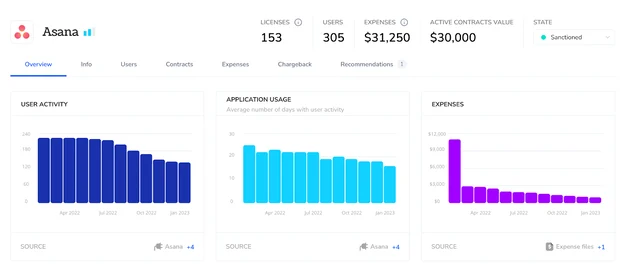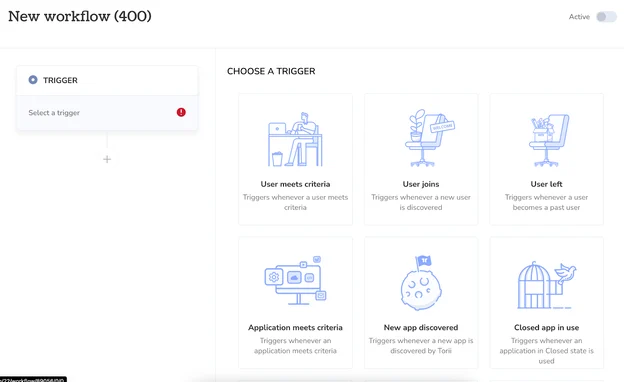💡Key Points:
- Today, cloud application adoption is distributed—meaning adopted by individuals throughout the organization
- IT, Security, Finance, and Procurement are still responsible for those applications even if they don’t have visibility
- IT needs to take a Distributed SaaS Management approach to gain visibility into the SaaS stack and gain administrative access to critical apps while letting app owners maintain control
- Torii allows IT to connect their apps to the Torii SMP so they can help administrate the application
- Torii also provides a designated seat in Torii for all application owners to help IT with critical, app-specific tasks
There’s a tug-of-war within your company between autonomy and control. Employees want autonomy to test and adopt new cloud applications, while others (such as IT, Procurement, Finance, Security, etc.) want to maintain some control.
This growing tension stems from how we adopt applications. Historically, selecting software was the responsibility of a handful of decision-makers—from IT, Procurement, etc.—and while they might involve other stakeholders, those decision-makers usually made the final call and maintained control.
Today’s scales have tipped to the side of autonomy. Adoption and purchasing are usually distributed throughout the organization. Employees can test, adopt, and integrate new applications with relative ease. This increases innovation but also increases exposure to the risks of Shadow IT; threatening security, budgets, and efficiency.
Despite these risks, IT leaders sympathize with their co-worker’s reasoning. These leaders want employees to have access to the right tools, but not at the expense of the company’s security or spend optimization. Thus, IT cannot surrender full control.
How Distributed SaaS Management Helps
There is an opportunity here to sidestep the tension and provide a solution that satisfies the desire of both sides.
- IT does not want control for control’s sake. Instead, they want visibility and the ability to administer the app in specific contexts.
- Typical employees want to avoid unmonitored wild-west. They want to experiment and leverage technology at a pace their demanding work requires.
The solution lies in providing IT visibility and administrative capabilities in a non-disruptive way. This is a perfect example of Distributed SaaS Management. A method of managing cloud applications as a company.
Our apps are distributed. The ownership, the data, and the contracts. However, many organizations still try to operate with an outdated framework. Distributed SaaS Management acknowledges the reality of our messy SaaS portfolio, and instead of denying it, we use it to our advantage.
For example, within Torii, we enable IT to integrate applications with Torii even if IT is not the app owner.
They can simply send a connect-link to the current owner and delegate the connection process.
Once the application is integrated with Torii, the IT team gains critical insight and can take action through Torii without logging into the application itself.
Let’s say you discover that some employees are using an unsanctioned instance of Asana. You can send a connect request to the application owner with a few clicks. Once connected, you have data for:
- User roles
- User status
- License info
- 90 days of usage back-dated from the moment you connect
Within Torii, you can also conduct automated actions for Asana, such as:
- Creating an Asana user
- Removing an Asana user
- Add user to an Asana team
- Remove users from Asana
- Create an Asana task
These actions can become seamless steps in a custom workflow for your needs.
In this instance, despite IT having no initial access to the application, they were able to administer the system through Torii while allowing the user to maintain ownership.
But what if you could further empower that owner?
Application Owners in Torii
With Torii’s new Application Owner role, admins can empower app owners with specific SaaS Management capabilities. This role allows these owners to monitor and take particular actions critical to their work:
- View app usage, license utilization, and financial data
- Take action over app users and app contracts, and update app information
The Application Owner provides IT with much-needed help without sacrificing oversight and visibility. They can delegate critical tasks to application owners—even through an automated workflow. In addition, those application owners become the point of contact for other departments needing information about specific applications.
Conclusion: Why Does This Matter?
SaaS exploded in distributed adoption, but we still leave IT responsible for maintaining and optimizing our SaaS stack. Not only is that wrong, but it’s also impossible.
Features like Requesting Integrations or Application Owner seats in Torii are just small parts of the larger Distributed SaaS Management mission. A Strategy to bring a team-first approach to managing our messy SaaS environment.
Distributed SaaS Management gives IT the tools to advise leadership and empower the rest of the organization to help in the work.
If you’d like to learn more about Torii and how it can help you, request a demo.



